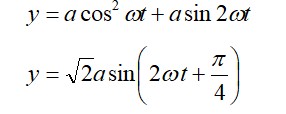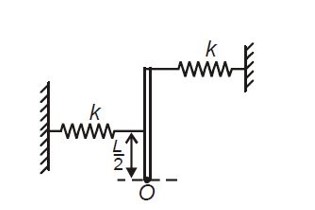Two particles A and B of equal masses are suspended from two massless springs of spring constants K₁ and K₂ respectively. If the maximum velocities during oscillations are equal, the ratio of the amplitude of A and B is
Two particles A and B of equal masses are suspended from two massless springs of spring constants K₁ and K₂ respectively. If the maximum velocities during oscillations are equal, the ratio of the amplitude of A and B is
Option 1 -
√(K₁/K₂)
Option 2 -
K₂/K₁
Option 3 -
K₁/K₂
Option 4 -
√(K₂/K₁)
-
1 Answer
-
Correct Option - 2
Detailed Solution:A? √* (K? /m)* = A? √* (K? /m)* ⇒ A? √K? = A? √K?
Similar Questions for you
Then,
Given mg = kL
∴ Iα = (kLθ.L + k (L/2)²θ - mg (L/2)θ)
(mL²/3)α = kL² (3/4)θ (restoring torque)
α = (9k/4m)θ
∴ ω = (3/2)√ (k/m)
y = A sin (2πt/T)
t? - t? = (T/2π) [sin? ¹ (x? /A) - sin? ¹ (x? /A)]
Taking an Exam? Selecting a College?
Get authentic answers from experts, students and alumni that you won't find anywhere else
Sign Up on ShikshaOn Shiksha, get access to
- 65k Colleges
- 1.2k Exams
- 682k Reviews
- 1800k Answers




